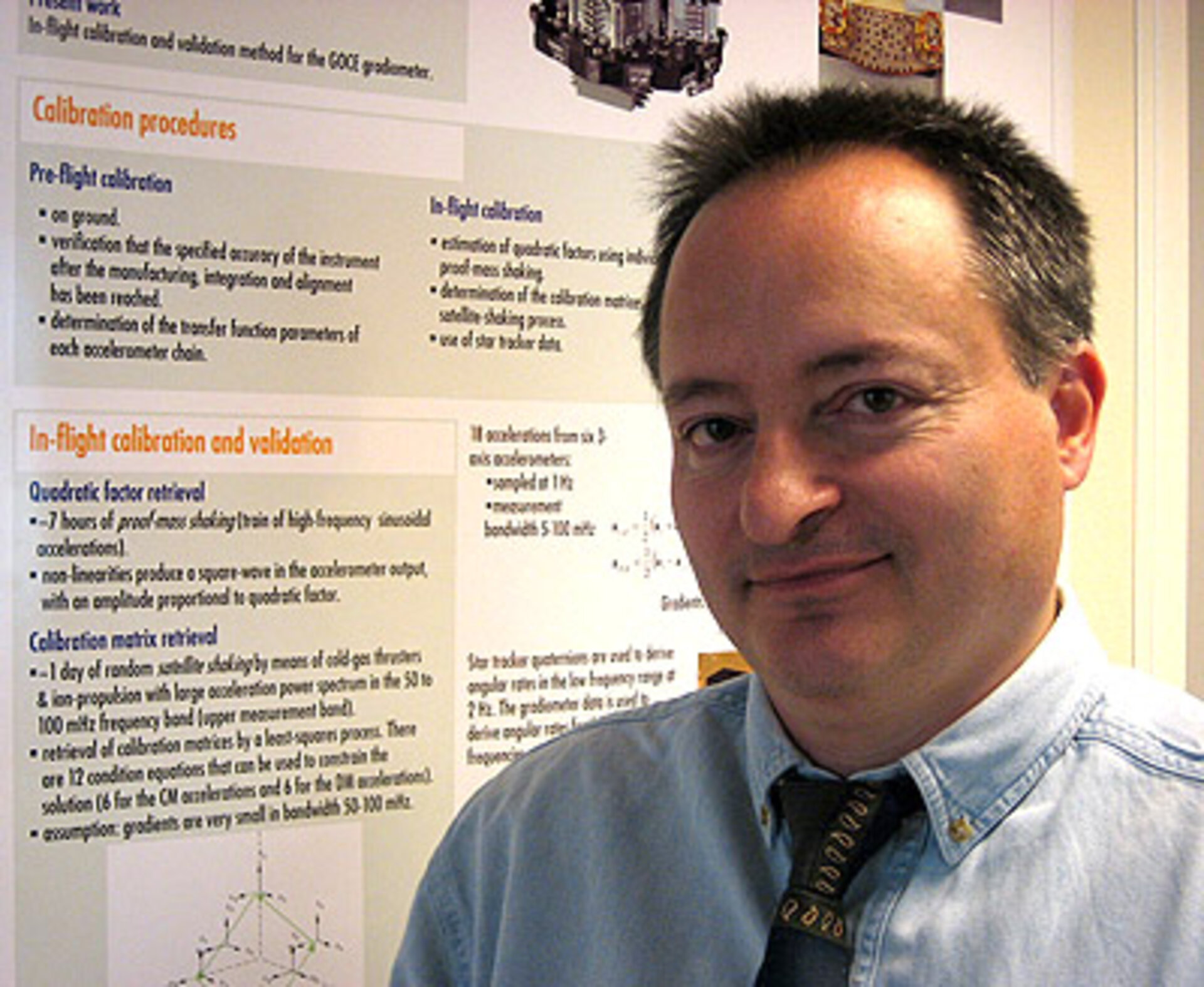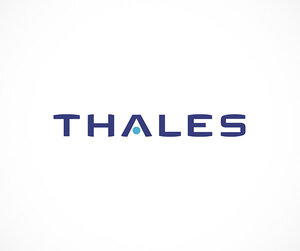GOCE Gradiometer Engineer: Interview with Daniel Lamarre
Daniel Lamarre invented and developed an ingenious method of calibrating GOCE’s main instrument – the gradiometer, for which he won an ESA award. Since it is impossible to calibrate the gradiometer on the ground under the force of gravity, calibration takes place post

Daniel Lamarre, a Canadian national, has been working at ESA’s European Space Research and Technology Centre (ESTEC) in the Netherlands since 1992. He joined the GOCE Project in November 2000.
Lamarre earned his B.Eng in Physics Engineering from the École Polytechnique de Montréal, Canada in 1983. Before joining ESA, he spent three years working as a scientist for the Defence Research and Development Canada Valcartier establishment, and six years for ABB Bomem, Québec City, Canada, as an Infrared Spectrometer Engineer.
ESA: Can you explain what calibrating the GOCE gradiometer means and why it is so important?
Daniel Lamarre
Through what we call calibration, certain parameters about the instrument are ascertained. In order to calibrate the GOCE gradiometer there are two steps to go through. This firstly involves measuring and correcting the gradiometer linearity. If not linear before the scientific measurements are made, errors appear in the data and they cannot be removed. The second step involves characterising the six accelerometers. Knowledge of each accelerometer response, with respect to the others, is necessary to accurately subtract spacecraft perturbations from the gravity-gradient measurements. To give you an analogy, we are trying to measure the weight of a mouse sitting on the back of an elephant. We weigh the mouse and the elephant together on one set of scales, and just the elephant on another set of scales. The difference in weight can be accurate only if the scales are identical.
ESA: What is special about the method you devised to calibrate the gradiometer?
Daniel Lamarre
Special, I do not know, but we were sure glad it was not too difficult to implement, although the mathematics involved were quite complicated. For what concerns the measurement of non-linearity, the principle is to generate, within each accelerometer, a high-frequency oscillation, which in turn, generates a low-frequency output signal but only if the accelerometer is not linear. This was achieved purely by software changes. For the inter-calibration of the accelerometers, the principle is simply to shake the spacecraft, randomly, in all directions. By number crunching you can deduce the necessary accelerometer parameters. To perform this shaking, the choice was made to implement a so-called ‘bang-bang system’, which means the eight cold gas thrusters are randomly turned on and off over several hours.
ESA: A gradiometer has never been taken into space before, what have been the main challenges devising a method of calibration?
Daniel Lamarre
GOCE calibration was originally based on the generation of simple but accurate spacecraft oscillations. However, half-way into the project, we understood that this actuation capability would not be available. We had to quickly come up with new ideas that didn’t involve major changes. Once we got the idea, the main difficulty was developing and demonstrating the algorithms. On the spacecraft side, we had to quickly design and manufacture a ‘shaking’ subsystem.
ESA: Since calibration doesn’t start until GOCE is in orbit how do you know it will work?
Daniel Lamarre
We are very confident that this method of calibration will work because it has been well tested with a simulator specifically designed for GOCE. Initially, I must say that I was quite sceptical about the usefulness of making a complete so-called End-to-End Simulator, but in fact I was proved wrong! The tool was developed by Thales Alenia Space in Italy and it took a very dedicated team to sort out the mathematics and simulate the flight conditions – at one point we were working almost 24 hours a day. The algorithms have been shown to work very well through ‘Monte-Carlo’ simulations where we applied the algorithms to a number of different situations.
ESA: What have been the most rewarding aspects working on GOCE?
Daniel Lamarre
By far, it is being appreciated by your colleagues. It is a great experience to be part of a dynamic and motivated team, and to feel that you work in cooperation with, and are supported by, your bosses. In the GOCE Project, our management has been very proactive in identifying and dealing with key issues and looking for solutions in a timely manner. At times they have been faced with very tricky problems and have had to make some difficult decisions.
ESA: Where will you be for launch?
Daniel Lamarre
Almost certainly I will attend the launch event at ESA-ESTEC.
Editor's note:
This is one in a series of interviews with a few of the key people that are involved in the GOCE mission. Please check back as the list will be added to over the coming weeks.




